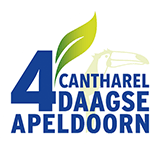Origin
The first Apeldoorn Four Days Marches was held in 1954. Organizer was the Nederlandse Wandelsport Bond (NWB). It started from the Bosbad in Apeldoorn. The venue was changed several times: the Eierhal (1955 – 1960), La Bordelaise (1961 – 1963), the Eurobeurs (1964), Schouwburg Orpheus (1965 – 1985), the Canadian Club (1986 – 1993) and again Orpheus ( 1994–2003). Since then, the VV Victoria Boys complex has been the beating heart of the Apeldoorn Four Days Marches. Participants were enthusiastic about this accommodation from the start: on the edge of the forest and with plenty of free parking.
Hikers
Since the merger of the NWB into the Koninklijke Wandel Bond Nederland (KWBN) on January 1, 2015, the International Four Days Marches Apeldoorn Foundation has been responsible for the organization of the event
The very first edition of the Apeldoorn Four Days Marches attracted 463 participants. The following year there were slightly more, and in 1956 717 walkers participated. In 1983 the limit of 2,000 participants was reached. The number continued to rise for several years, reaching over 4,000 at the beginning of this century. In recent years, there are – including day walkers – a total of just under 3,000 walkers. Incidentally, there is a maximum number of participants per distance in Apeldoorn, because the courses (sometimes narrow paths through nature) do not allow very large numbers.
New distance
In order to meet the needs of hikers for whom the tough 30, 40 or 50 kilometer courses became too strenuous, it was decided in 1996 to also introduce the 20 km distance. And with success: a large proportion of the participants opt for this distance. A few years ago, a distance of 12 km on average was also added, so that even more walkers can enjoy a beautiful walk.
Two points have disappeared over the years: the festive opening on the Monday preceding the first walking day (the Four Days Marches traditionally start on the second Tuesday of July) and the joint entry at the end of the Four Days Marches.

